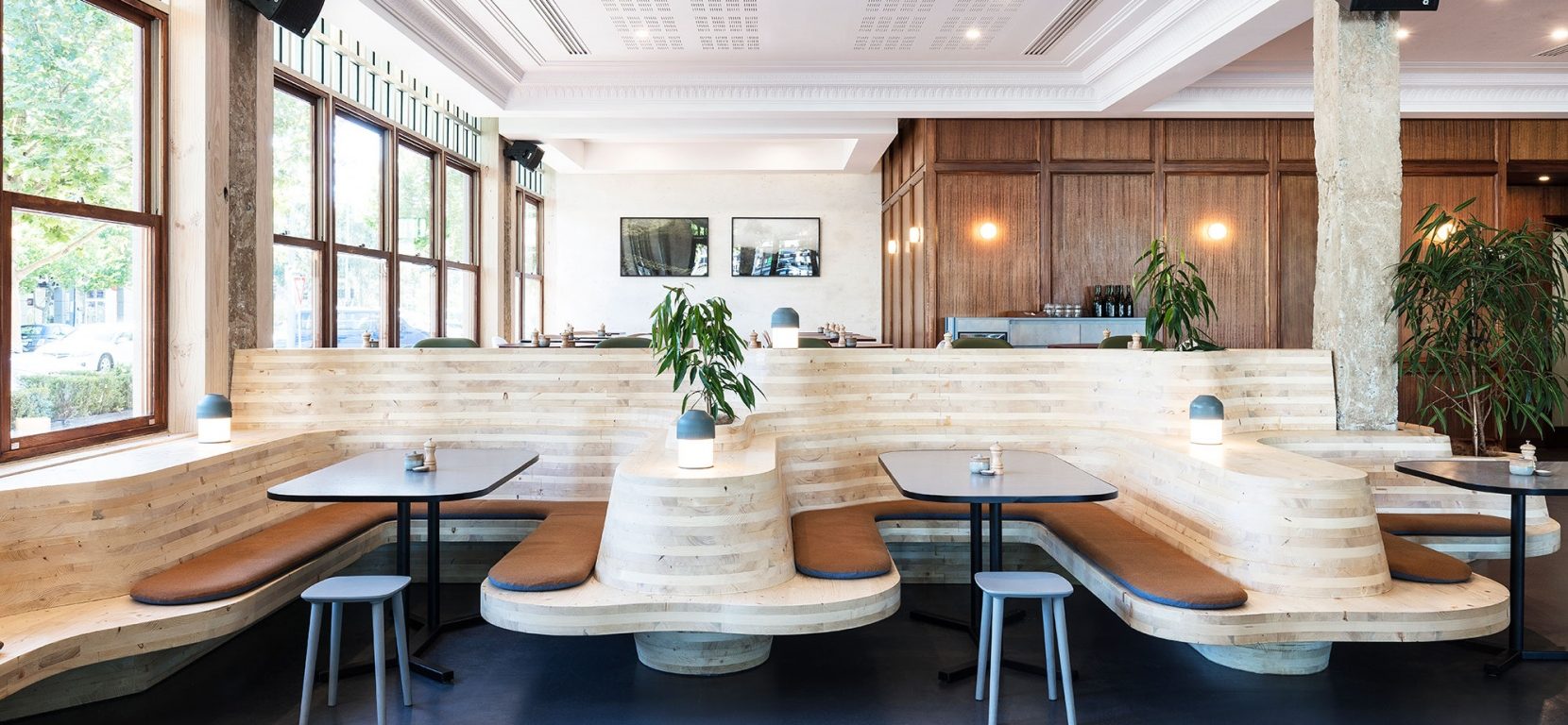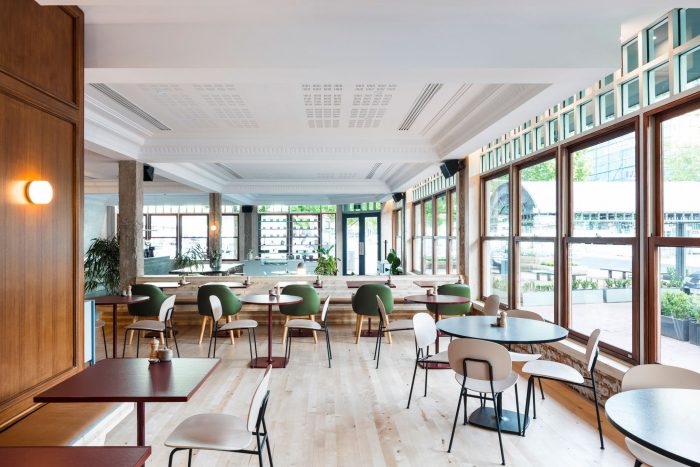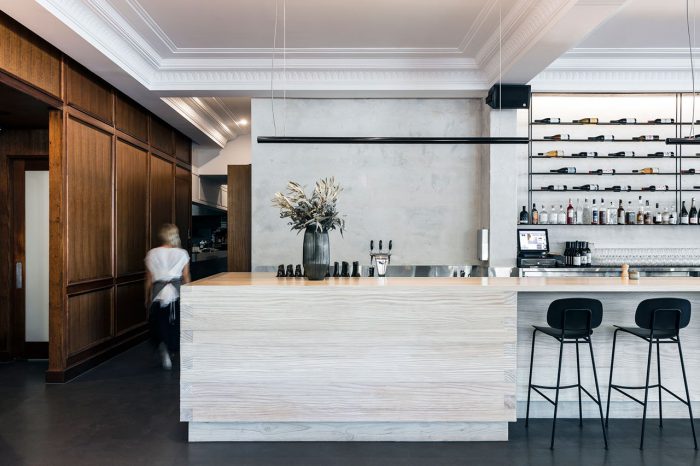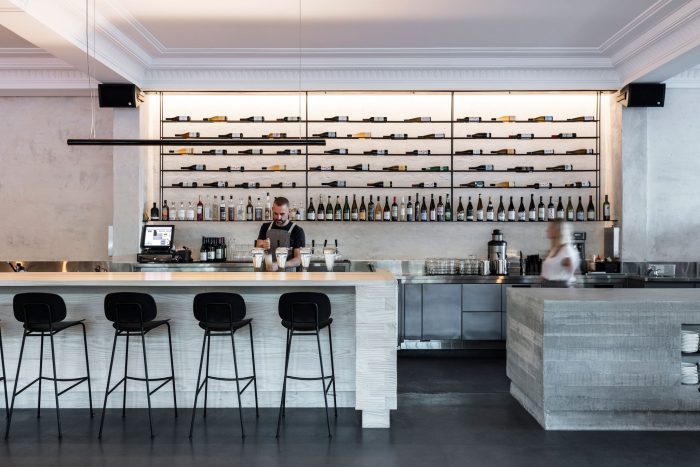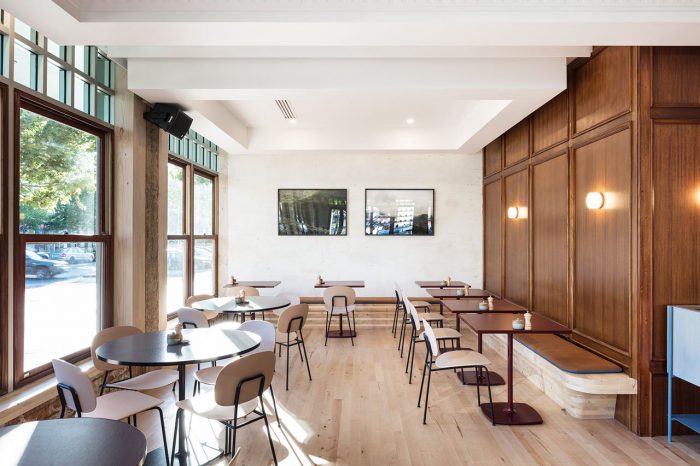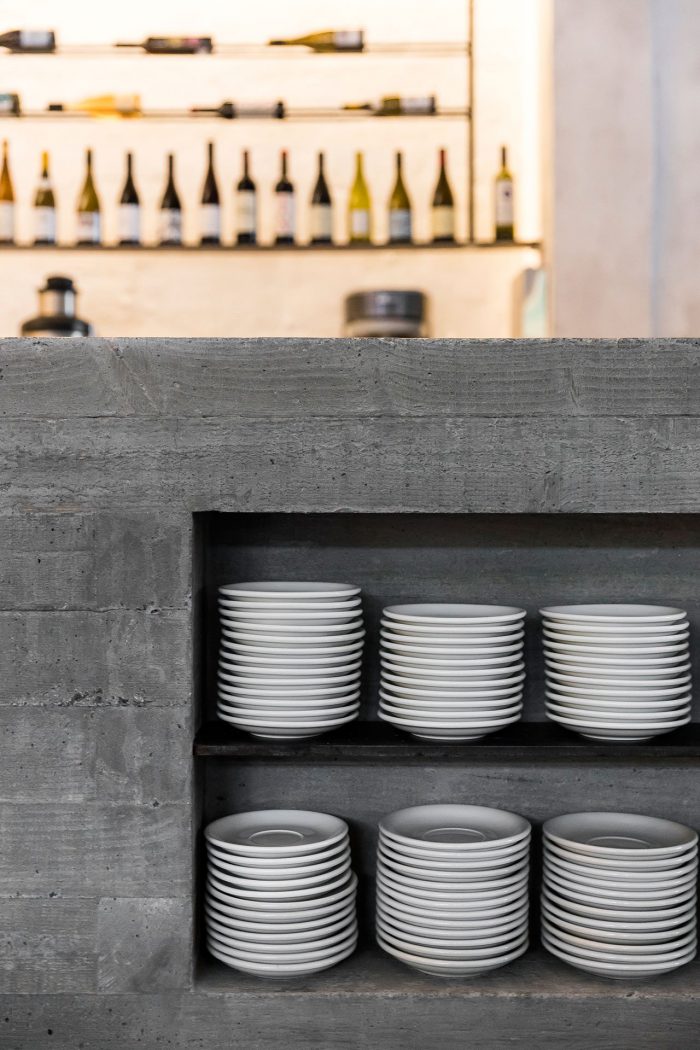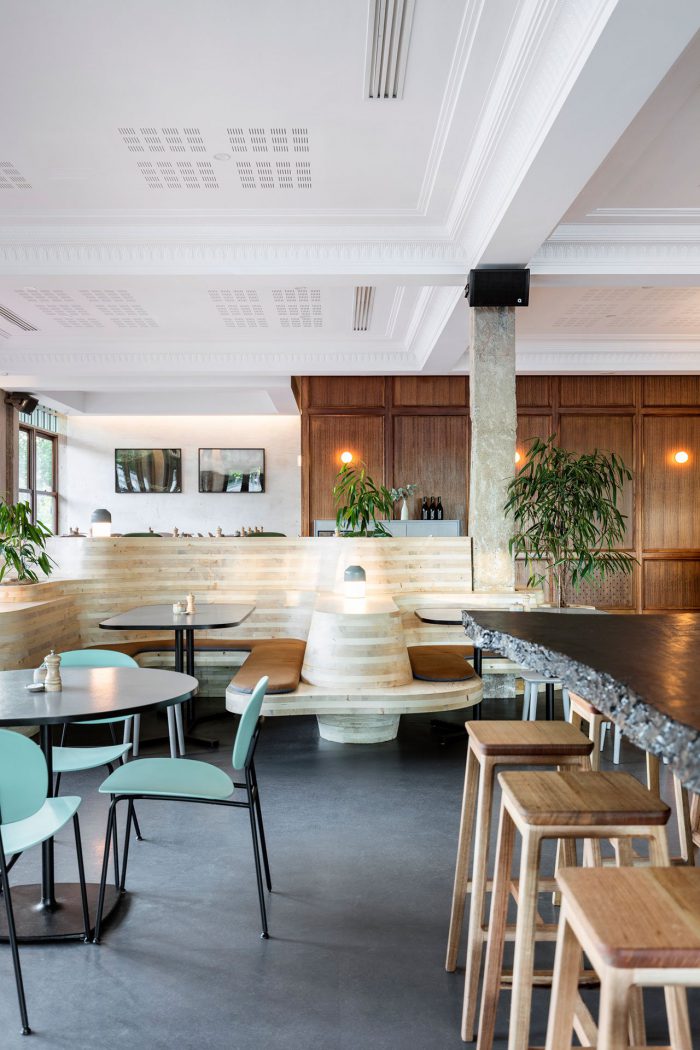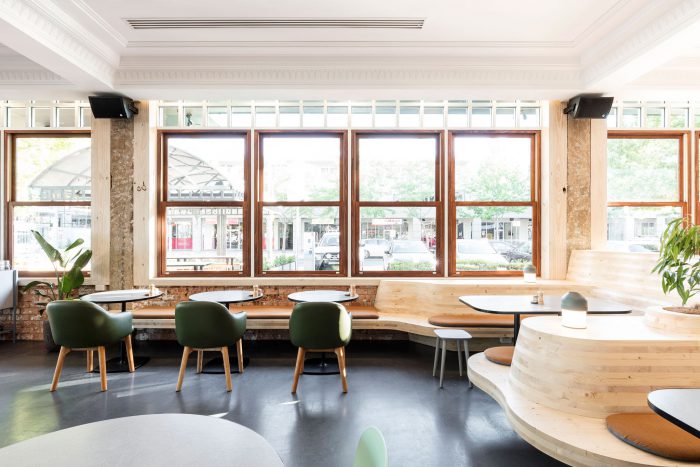穿过完全规划的现代主义澳大利亚首都堪培拉,有一个大型的人工湖,你会忘记大约一个世纪前除了青翠的山丘和桉树林之外什么都没有,或者当地人称它为“灌木丛”。 堪培拉建于20世纪初,主要建于二战后,建于本世纪中叶的建筑美学,是一个充满自然景观的现代化大都市。 这座城市与人造自然共存的分裂个性,是位于墨尔本Foolscap Studio的堪培拉内北区全天咖啡馆,酒吧和餐厅,来自“ Highroad ” 设计的灵感来源。 和谐地将原始的天然材料与精致的细节和精致感相结合,设计师们创造了一个温馨的场所,在堪培拉白天和晚上都能感受到回家的感觉。
通过使用对比材料,纹理和形式,设计需要一个混合环境,柔和人工环境与自然环境。 利用翻新工艺,建筑物的混凝土柱已被剥去所有装饰性覆层,把本来面貌裸露出来,因为窗户采用了外墙的砖墙。这些元素表现出原始的砂砾,与石膏檐口优雅地并置,石膏檐口装饰着保险箱天花板,光滑的木质镶板覆盖了空间后面的墙壁
Walking through Canberra, the entirely planned modernist Australian capital, complete with a large artificial lake, you tend to forget that about a century ago there was nothing here except verdant hills and eucalyptus forests, or as locals call it “the bush”. Founded in the early 20th century and mostly build after WWII to a mid-century architectural aesthetic, Canberra is a modern metropolis engulfed by a natural landscape of wild beauty. The city’s split personality, where the natural co-exists with the man-made, was the inspiration behind the design of “Highroad”, an all-day café, bar and restaurant at Canberra’s inner-north by Melbourne-based Foolscap Studio. Harmoniously combining raw and natural materials with refined details and a sense of sophistication, the designers have created a welcoming venue where Canberrans can feel right at home day and night.
Through the use of contrasting materials, textures and forms, the design calls for a hybrid environment that reflects both the concrete, steel and glass urban context and the lush natural habitat that surrounds it. Taking advantage of the renovation process, the building’s concrete columns have been stripped of any decorative cladding and have been left exposed as has the brickwork that lines the window-filled facades. These elements evince a raw grittiness that is elegantly juxtaposed with the plaster cornice that adorns the coffer ceilings and the smooth timber panelling cladding the walls at the back of the space.
在自然和人造之间的平衡张力比在整个空间长度的长条形柜台的设计中更加明显。另一方面,模板浇注的细长混凝土块作为咖啡柜台,同时也是意大利,堪培拉着名建筑师Enrico Taglietti的附近Dickson图书馆的视觉参考。建于1968年,其角度几何形状,板状图案的异形混凝土墙和水平屋顶平面表明了二十世纪晚期的有机风格,对堪培拉的建筑产生了持久的影响。
咖啡柜台的立体主义体积被另一侧的吧台反射,虽然通过使用喷砂的实心松木更柔和。喷砂松木也被用于窗户装饰,与外露的混凝土柱相结合,与酒吧的混合美学相呼应。
Nowhere is the balanced tension between the natural and the man-made more evident than in the design of the long bar counter that runs across the entire length of the space. On the one side, a slender block of concrete that has been poured in-situ serves as the coffee counter whilst also standing as a visual reference to the nearby Dickson Library by Italian, Canberra-based esteemed architect Enrico Taglietti. Built in 1968, its angular geometry, board patterned off-form concrete walls and horizontal roof planes are indicative of the Late Twentieth-Century Organic style that had a lasting impact on Canberra’s architecture.
The cubist volume of the coffee counter is evocatively mirrored by the bar counter on the other side, albeit in a softer incarnation through the use of sandblasted solid pine whose horizontal strips reverberate the concrete’s board pattern. Sandblasted pine was also used for window trims, which combined with the exposed concrete columns, echo the bar’s hybrid aesthetic.
场地的核心无疑是雕塑的长椅,在整个空间中有机地展开,吸引顾客进入,并在后面变成一个凸起的区域。由交叉层压木材制成,形成一系列曲线美的座位,装置的轮廓灵感来自环绕城市的山地地形。伴随着圆角的细长桌子,浅蓝色的凳子和盆栽植物,形成了一种特殊的室内景观,轻柔地迎合了客人。
木制长椅的光滑柔软与整个空间的烧焦木材餐桌桌的锯齿状粗糙相结合,其黑色表面似乎嘲弄木材曲线的金色。同时,桌面和椅子上的粉红色,栗色,浅青色,绿色和灰色染色木材的引入平衡了暴露的混凝土和天然木质表面的原始性,定制的蓝色木材服务台也是如此,蓝色粉末涂层金属细节。
The venue’s centrepiece is undoubtedly the sculptural banquette that organically unfolds across the space drawing patrons in, and morphing into a raised area in the back. Made out of cross laminated timber that has been shaped into a series of curvaceous booths, the contours of the installation are inspired by the mountainous topography that encircles the city. Accompanied by slender tables with rounded corners, baby blue stools and potted plants, an idiosyncratic interior landscape is thus formed that softly embraces guests.
The smooth suppleness of the wooden banquette is playfully juxtaposed with the jagged harshness of the charred timber communal table across the space, whose black surface seems to taunt the blondness of the timber curves. Meanwhile the introduction of dusty pink, maroon, pale teal, green and grey stained timber for tables and chairs balances the rawness of the exposed concrete and natural wooden surfaces as do the bespoke blue-stained timber waiter stations, complete with blue powder-coated metal detailing. Ultimately, it’s a demanding balancing act overall that Foolscap Studio has artfully executed as a nod to the unique Canberran personality.
Design studio: Highroad
Photography: Tom Ferguson
Location: CNR CAPE & WOOLLEY ST. CANBERRA AUSTRALIA

